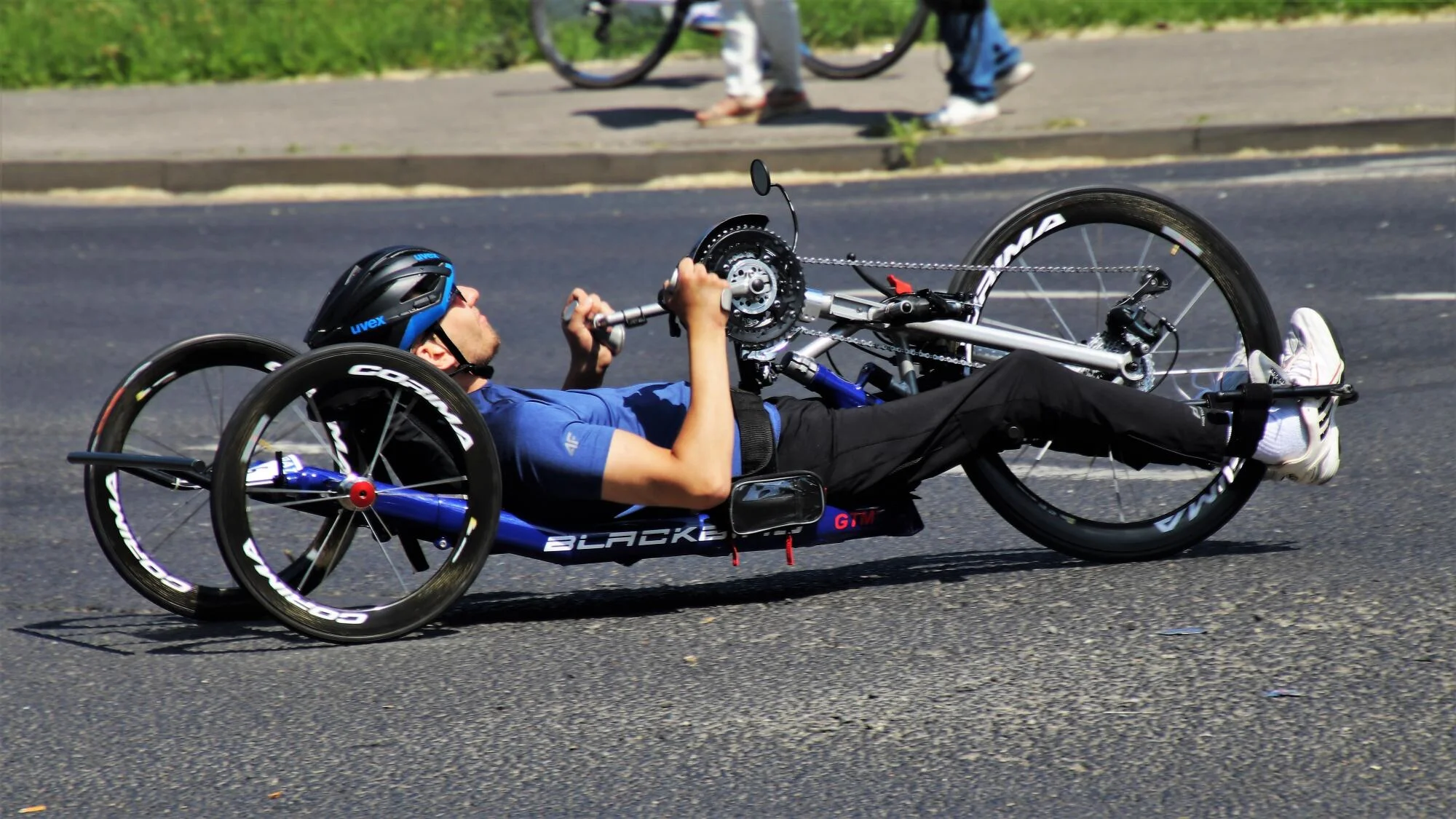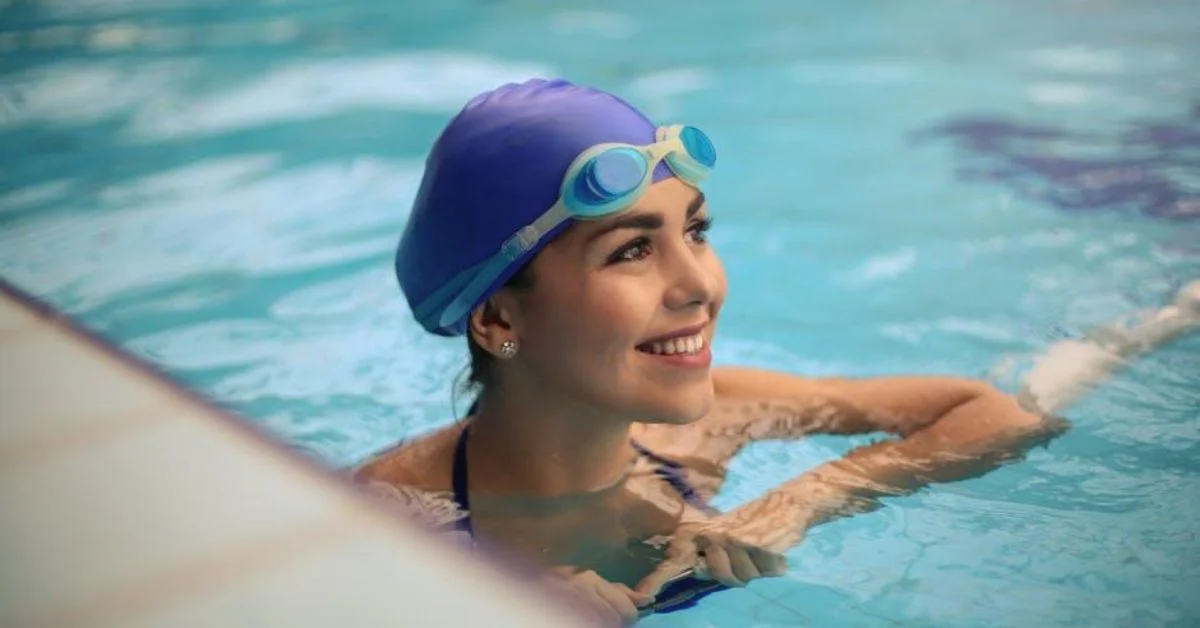SPORTS
The Benefits of a Drift Trike for Your Physical and Mental Health

In a world where screens dominate our daily lives, finding an engaging and fun way to stay active is more crucial than ever. Enter the drift trike-a thrilling, three-wheeled contraption that promises not only a good time but also a host of physical and mental health benefits.
Read on to learn the benefits of a drift trike.
Improved Balance and Coordination
A drift trike requires a lot of balance and coordination to ride successfully. The rider must shift their weight and steer the front wheel using handlebars while controlling the drift with their body movements. This constant control requires good hand-eye coordination, core strength, and overall body awareness.
As a result, regular use of a drift trike can significantly improve these skills. Electric drift trikes are especially challenging.
They have higher speeds and more powerful motors. This makes them an excellent choice for those looking to push their balance and coordination to the next level.
Cardiovascular Fitness
Drift trikes may seem like a leisurely activity, but they can provide a surprisingly intense cardiovascular workout. The constant pedaling and body movements required to control the drift can quickly get your heart rate up, promoting cardiovascular health and boosting endurance.
Additionally, drift trikes allow for a low-impact workout that puts less stress on joints compared to other traditional forms of cardio exercise. Electric trikes, in particular, offer the added benefit of a motor assist, making it easier to tackle hills and longer rides without putting too much strain on the body.
Mental Health Benefits
Regular exercise is known to have numerous mental health benefits, and drift triking is no exception. The combination of physical activity and adrenaline-pumping fun can release endorphins and reduce stress levels.
Moreover, mastering new skills and overcoming challenges while riding a drift trike can also boost confidence and self-esteem. It’s a great way to escape the daily grind and have a positive impact on mental well-being. A drifting trike can also be a social activity, providing an opportunity to bond with friends and family while getting some exercise.
Versatility and Accessibility
Drift trikes are versatile and accessible to people of all ages and fitness levels. They can be ridden on various terrains, from smooth pavement to dirt tracks, making it a suitable activity for different environments.
The trikes themselves come in a range of styles and sizes, so whether you’re a beginner or an experienced rider, there’s a drift trike out there for you. Plus, with the option of electric motors, even those with physical limitations can join in on the fun.
Core Strength and Stability
Using a drift trike regularly can also enhance core strength and stability. The rider must constantly engage their core muscles to maintain balance and control, especially when making sharp turns or attempting drifts. This engagement helps in developing a stronger and more stable core, which is essential in everyday activities and other athletic endeavors.
Over time, this core activation can lead to better posture and reduced risk of injuries related to weak core muscles. You can also opt for Ice trikes with two wheels in the front and one at the back, providing an even more challenging workout for your core.
Fun and Motivation
One of the key benefits of drift trikes is that they turn exercise into a fun and enjoyable experience. Traditional workouts can often feel monotonous and strenuous, leading many people to lose motivation.
But, the joy of drifting and the challenge of mastering new skills can keep riders engaged. This fun factor can motivate individuals to stay consistent with their physical activity, ultimately leading to better health outcomes.
Environmental Benefits
Opting for a drift trike, especially an electric one, can also have positive environmental implications. Drift trikes are a sustainable mode of transportation and recreation, as they typically have a smaller carbon footprint compared to cars and motorcycles.
Using a drift trike for short commutes or leisure activities can cut greenhouse gas emissions. It helps make a cleaner, healthier environment.
Social Interaction and Community Building
Drift triking can foster social interaction and community building. Many enthusiasts form clubs.
They ride in groups and attend events or competitions. This creates a sense of camaraderie and shared passion.
These social gatherings offer a platform to share tips. They also showcase skills and encourage each other. This makes the activity more enjoyable.
Being part of such communities can also provide a support network. They promote mental well-being through social connections.
Customization and Personal Expression
Drift triking has another appealing aspect. It offers the chance for customization and self-expression.
Riders can modify their trikes to show their style. They can add custom paint jobs, decals, or new components.
These changes can boost performance or looks. This customization not only makes each drift trike unique but also allows riders to showcase their personality and creativity.
You can tweak and upgrade parts of the trike. This includes wheels, seats, and motors. It can also lead to a sense of accomplishment and deeper hobby engagement.
For many, the ongoing project of perfecting their drift trike becomes a rewarding part of the overall experience.
Enhancing Spatial Awareness
Riding a drift trike enhances spatial awareness-the ability to perceive and interpret the space around you. Doing precise drifts requires understanding speed, distance, and angles.
It needs to navigate varied terrains well. Over time, this better sense of space can help in other sports. It improves agility and reaction times.
Drift triking is an exhilarating activity. It sharpens the mind and body. It is not just fun but also a way to develop key life skills.
Enhancing Problem-Solving Skills
Drift triking is not just about effort. It also needs quick thinking and problem-solving.
Riders often face surprise obstacles. They need to adjust and plan fast. It’s about finding the best way to navigate a tricky drift.
It’s about choosing the right moment to accelerate. These split-second decisions hone one’s problem-solving skills.
Also, working on a drift trike can be a technical challenge. It provides a chance to learn mechanics and engineering.
Working on the trike means adjusting wheel alignments and tuning the motor. It can be a stimulating experience. It boosts cognitive skills.
Riding a Drift Trike
From improved balance and coordination to mental well-being, there are many benefits of riding a drift trike. This versatile and accessible activity offers an array of physical, mental, and social advantages while also providing opportunities for self-expression and personal growth. So whether you’re looking for an adrenaline rush or a new way to stay active, consider giving drift triking a try!
Visit our website for more like this.
SPORTS
Dive Deeper: Exploring Effective Swimming Breathing Techniques

When it comes to swimming, the focus on perfecting form and technique often eclipses one of the most integral aspects of the sport – the breath. Efficient and rhythmic breathing is not only essential for maintaining stamina but also for allowing your strokes to glide through the water effortlessly.
Are you a novice swimmer looking to improve your swimming skills? Or are you an experienced athlete aiming to fine-tune your abilities? Here’s a deep look at the vital role swimming breathing techniques play in swimming.
The Anatomy of Effective Breathing
Before diving into breathing techniques, it’s crucial to grasp why your breath matters in swimming. It’s not just about staying afloat while gasping for air; it’s about syncing breath with movements for optimal performance. Incorrect breathing can disrupt your position, stroke, and endurance.
Conversely, a good technique boosts buoyancy, streamlines your body, and enhances efficiency. Start by breathing in the water like on land – calmly and rhythmically. Sync your breathing with your stroke, whether freestyle, breaststroke, backstroke, or butterfly.
Freestyle Breathing Fundamentals
In freestyle, bilateral breathing is key. Breathe every third stroke, alternating sides. It may feel strange, but it’s highly beneficial. Balances the stroke, shapes the body symmetrically, and improves air exchange efficiency.
Practice bilateral breathing at the pool’s edge before adding it to your routine. Quick inhales through your mouth with your head turned to the side, followed by continuous exhales through your nose or mouth for better buoyancy and smoother strokes.
Backstroke and Breaststroke Tips
For backstroke, it’s all about the rhythm. Your head should remain as still as possible looking up, but it’s not necessary to clear the water. Focus on a consistent breathing pattern that works with your natural rolling motion. Keep your mouth closer to the water’s surface, so you don’t disrupt your position.
In breaststroke, timing is key. You’ll want to inhale as you stroke your arms out and exhale as you pull them in. Again, practice good timing and consistent breathing to maintain a steady glide.
Butterfly Breathing Breakdown
The butterfly stroke is one of the most demanding in terms of breath control. Here, you’ll need to time your breath between powerful arm motions. It’s a more forceful breath compared to freestyle, but the concept remains the same – clear, quick, and well-timed to your body’s undulation through the water.
Improving Lung Capacity Through Training
Effective swimming breathing doesn’t just happen; it’s the result of practice and training that you can get from swimming lessons in Singapore for example. Building lung capacity is a critical step toward enhancing your swimming endurance. The more air you can take in with each breath, the longer you can sustain your strokes without fatigue.
The Importance of Dryland Training
Lung capacity can be developed both in and out of the water. Activities like running, cycling, and yoga can boost your cardiovascular health and expand your lung function. Even simple and focused breathing exercises can make a significant impact.
In-Water Techniques for Lung Expansion
When you’re in the pool, consider incorporating hypoxic sets into your routine. These are exercises that restrict your breathing, typically by swimming with fewer breaths than you normally would (like every five or seven strokes instead of three).
Start with a comfortable pattern that’s one or two strokes less than your usual, and gradually work your way up. Hypoxic sets should be done sparingly and always with a partner or under the supervision of a coach to ensure safety.
Breath Control and Relaxation
One of the most overlooked aspects of swimming is the ability to stay calm underwater. Panic breathing, where you take too many short, shallow breaths, can quickly deplete your oxygen supply and lead to hyperventilation in the water.
Pranayama for the Pool
Incorporating pranayama, the yogic art of breath control, can help you regulate your breath and keep your movements steady. Try exercises like deep breathing, alternate nostril breathing, or breath of fire to find what works best for keeping you calm yet energized.
Visualization for Success
Athletes across disciplines use visualization techniques to improve performance, and swimming is no different. Picture yourself in the pool, gliding effortlessly with each breath in perfect rhythm.
Conjure the sensations and sounds of a smooth, controlled swim with your breaths as a vital part of the process. The more vividly you can visualize, the more natural it will become in practice.
Buoyancy Boosters
Staying afloat is a meticulous balance of body placement and breath control. Mastering buoyancy can transform how you move through the water, alleviating strain and making your strokes more powerful.
Core Strength and Positioning
Engage your core to maintain a flat, high body position in the water. This will not only reduce drag but also help you breathe more effectively. Think ‘long and tall’ rather than ‘sinking and short.’
The Role of Relaxation
It seems counterintuitive, but the more relaxed you are, the better you’ll float. Tension causes your body to sink, disrupting your stroke and potentially your breathing. Practice swimming drills that focus on relaxation, like the one where you extend your arms and legs and float in a star position.
Building Endurance by Breathing Right
The pinnacle of your breathing technique’s success will be reflected in your endurance. To swim longer and with greater strength, you’ll need a trick up your sleeve – or rather, in your lungs.
Pacing and Perception
Understand your threshold and slowly push it. Learn to pace yourself so that your breathing keeps up with your body’s demands. Perception is everything; sometimes, what feels like a need for air is a miscommunication of your internal gauges. Trust the rhythm you’ve practiced.
Interval and Distance Training
Incorporate interval training to force your body to adapt to oxygen-deprived conditions. This not only improves your ability to breathe efficiently but also to recover mid-swim. Meanwhile, distance training helps you maintain that efficiency over time, building a robust respiratory system.
Start Exploring These Effective Swimming Breathing Techniques
Breathing is the purest form of our interaction with the world – and in swimming, swimming breathing techniques are your lifeline and your power source. By focusing on the three pillars of breath: form, function, and training, you can elevate your swimming prowess to new depths.
With patience and perseverance, each breath defies the water. It links inner strength to performance. Take a deep breath, feel worries fade in the pool, and dive into where silence meets power – and glide. Ready to explore more realms of mastery?
Browse our collection of articles on various topics to enhance your knowledge, skills, and passion.
SPORTS
Golfklúbbar Insights: Everything You Need to Know

Introduction to Golfklúbbar
Golfklúbbar are more than just places to play a round of golf; they are communities where enthusiasts come together to share their passion for the game. Whether you’re an avid golfer or just starting out, understanding the ins and outs of these clubs can enhance your experience tremendously. From rich histories that date back centuries to modern amenities designed for relaxation and enjoyment, golfklúbbar offer something for everyone.
In this blog post, we will explore every facet of golfklúbbar—from membership benefits and fees to exciting events and tournaments. If you’ve ever considered joining one or simply want to learn more about what they have to offer, keep reading! Your journey into the world of golfklúbbar starts here.
The History and Evolution of Golfklúbbar
Golfklúbbar have a storied past, dating back to the 15th century in Scotland. The game of golf began to gain popularity among the nobility, leading to the establishment of exclusive clubs.
Initially, these clubs served as social hubs for wealthy individuals. Members enjoyed not only golf but also leisurely activities like dining and gambling.
As the sport spread across Europe and then globally, so did the concept of golfklúbbar. They evolved from simple greens into sprawling complexes featuring state-of-the-art facilities.
The 20th century brought significant changes with increased accessibility. More people sought membership beyond elite circles, allowing diverse communities to flourish within various clubs.
Today’s golfklúbbar blend tradition with modernity, offering an array of amenities while maintaining historical charm. This evolution reflects shifts in society and culture surrounding this beloved game.
Membership Benefits and Fees
Membership in golfklúbbar offers a wealth of advantages that go beyond just access to the course. Members enjoy exclusive rights to practice facilities, which can significantly enhance their skills and overall game.
Many clubs host regular social events, creating opportunities for networking and friendships among fellow golf enthusiasts. These gatherings often include themed nights, tournaments, and casual meet-ups.
Fees vary widely between clubs based on location, amenities, and membership levels. Some offer tiered pricing structures catering to families or juniors. It’s essential to consider what each club provides when evaluating costs.
Additionally, many memberships come with perks like discounts at pro shops or dining facilities. Such incentives make membership not only enjoyable but also economical in the long run.
Facilities and Amenities at Golfklúbbar
Golfklúbbar are not just about the game; they offer a variety of facilities and amenities that enhance the overall experience. Many clubs feature state-of-the-art driving ranges, putting greens, and practice bunkers designed for all skill levels.
Beyond golf, members can enjoy fine dining restaurants that serve delicious meals made from local ingredients. These venues often provide stunning views of the course, making each meal feel like an occasion.
Additionally, most golfklúbbar include well-equipped fitness centers and spas. Members can unwind after a long day on the course with massage therapy or wellness treatments.
Social spaces such as lounges or event halls also foster community spirit among golfers. They’re perfect for gatherings or casual meet-ups to discuss tactics over coffee.
Some clubs even host swimming pools and tennis courts for those looking to diversify their recreational activities while enjoying luxurious surroundings.
Events and Tournaments at Golfklúbbar
Golfklúbbar are vibrant hubs of activity, hosting a variety of events and tournaments throughout the year. From friendly competitions to prestigious championships, there’s always something happening on the greens.
Members can participate in weekly leagues that build camaraderie among players. These informal sessions offer a relaxed environment for golfers of all skill levels to connect while honing their skills.
Major tournaments often attract participants from near and far. They provide an opportunity for members to showcase their talents and possibly win impressive prizes. Many clubs also host charity events, allowing golfers to support local causes while enjoying their favorite sport.
Social gatherings are another important aspect of club life. Whether it’s themed nights or gala dinners, these occasions foster friendships beyond the fairway, creating lasting connections within the community.
How to Join a Golfklúbbar
Joining a golfklúbbar can be an exciting step for any golf enthusiast. Start by researching local clubs that align with your interests and skill level. Look for reviews online or ask friends about their experiences.
Once you have a few options, visit the clubs to get a feel for the atmosphere. Speak with current members and staff; they can offer valuable insights into what each club has to offer.
Most golfklúbbar require an application process. This typically involves filling out forms, providing references, and sometimes participating in an interview or trial round.
Be ready to discuss your golfing background and why you would like to join. Understanding membership fees is essential too; inquire about initiation costs as well as ongoing dues.
Don’t hesitate to take advantage of any introductory events or open days offered by the club. These are perfect opportunities to meet fellow golfers and explore the facilities firsthand.
Tips for Making the Most of Your Membership
Take full advantage of your golfklúbbar membership by engaging with fellow members. Networking can lead to lasting friendships and potential playing partners.
Try to participate in club events. Tournaments, clinics, and social gatherings offer great opportunities to improve your game while having fun. Don’t hesitate; get involved!
Make use of the facilities available. Spend time on the practice range, utilize putting greens, or even take lessons from professional instructors associated with your club.
Stay informed about upcoming activities through newsletters or bulletin boards. Knowing what’s happening helps you plan better and ensures you never miss out.
Consider volunteering for committees or special projects within the club. This not only enhances your experience but also allows you to contribute positively to the community around you.
The Future of Golfklúbbar
The future of golfklúbbar is poised for transformation. As technology advances, so too does the way we experience the game. Smart courses with GPS and weather tracking are becoming more common. They enhance play while ensuring safety.
Sustainability will also take center stage. Golfklúbbar are increasingly adopting eco-friendly practices, from water conservation to using organic fertilizers. This shift appeals not only to players but also addresses global environmental concerns.
Inclusivity is another trend on the rise. Clubs are focusing on attracting diverse members by hosting events tailored to various skill levels and backgrounds. This effort fosters a welcoming community around golf.
Online engagement will continue growing, allowing clubs to maintain connections with members through digital platforms. Whether it’s virtual tournaments or social media interactions, these channels enrich member experiences beyond traditional means.
Conclusion
Golfklúbbar offer a unique blend of sport, community, and lifestyle. They have evolved significantly over the years to cater to varying needs and preferences. With various membership benefits, top-notch facilities, and exciting events, they present an inviting environment for golf enthusiasts at all levels.
Joining a golfklúbb can be an enriching experience. Whether you’re looking to improve your game or simply enjoy the social aspect of golfing, there’s something for everyone. By taking full advantage of the amenities and participating in club activities, members often find themselves part of a vibrant community.
As we look ahead, golfklúbbar are poised to adapt further with changing trends in sports and leisure activities. The future holds promise as clubs continue innovating ways to enhance member experiences while remaining accessible and engaging for new golfers.
Embracing this world opens doors not only on the course but also within a network of passionate individuals who share your interests. Exploring what each golfklúbb has to offer could lead you down a fulfilling path filled with camaraderie and competition. So grab your clubs; it’s time to discover everything that awaits you in the realm of golfklúbbar!
FAQs
What is “golfklúbbar”?
Golfklúbbar are golf clubs that serve as both play areas and social communities for golf enthusiasts. They offer facilities, events, and a network of members who share a passion for the sport.
How did golfklúbbar evolve over time?
Originating in 15th-century Scotland, golfklúbbar evolved from exclusive social hubs for the elite into diverse, modern clubs with expansive facilities, accessible to a broader audience.
What are the benefits of joining a golfklúbbar?
Membership benefits include access to exclusive practice facilities, social events, networking opportunities, and potential discounts at associated amenities, all enhancing both your game and social experience.
What amenities are typically found at golfklúbbar?
Golfklúbbar often feature driving ranges, putting greens, fitness centers, spas, fine dining, and social spaces, offering a comprehensive experience beyond just golfing.
How can I join a golfklúbbar?
To join, research local clubs, visit them to assess their offerings, complete the application process, and attend introductory events. Fees and requirements vary, so be sure to inquire about these details.
SPORTS
Creating a Home Golf Practice Space: Turning Your Yard or Basement into a Training Ground

In recent years, the trend of creating personal golf practice areas at home has seen significant growth.
With advancements in technology and increased accessibility to high-quality equipment, golf enthusiasts are finding it easier than ever to refine their skills from the comfort of their own homes.
Having a dedicated space for golf practice not only saves time and trips to the driving range but also allows for more frequent practice sessions, regardless of weather conditions.
DIY Golf Simulator: The Centerpiece of Home Golf Practice
A DIY golf simulator is often the centerpiece of any home golf setup. It combines technology and convenience, allowing golfers to simulate playing on real golf courses around the world.
This setup is not just about fun; it’s a serious training tool that can provide detailed feedback on every shot, helping to improve your game systematically.
Planning Your Space
The first step in setting up a home golf simulator is evaluating the available space. Whether you’re considering transforming a section of your yard or repurposing your basement, the amount of space available will dictate the type of equipment you can install. Ensure there is enough room for a full swing, especially if you plan to use drivers or longer clubs.
Outdoor vs. Indoor Setups
For outdoor setups, factors like weather, privacy, and the level of permanence need consideration. Outdoor simulators can offer a more realistic golf feel but require weather-resistant materials and may need more maintenance.
Indoor setups, on the other hand, offer year-round accessibility and can be set up in a garage, basement, or spare room. Key considerations include ceiling height, space dimensions, and environmental control to protect the technology from humidity and extreme temperatures.
Essential Components of a Golf Simulator
A basic DIY golf simulator setup includes several key components:
- Launch Monitors: These devices track the speed, angle, and spin of the golf ball and are crucial for simulating realistic shot outcomes.
- Impact Screens: Durable screens capture and display the trajectory of the golf balls.
- Hitting Mats: These replicate the feel of a golf course and provide a realistic surface from which to hit balls.
- Projectors: For more advanced setups, projectors can display the simulation on the impact screen, enhancing the visual experience.
Detailed Component Selection
- Launch Monitors: The Rapsodo MLM2PRO is a popular choice for its accuracy and affordability, capable of providing detailed analytics like ball speed and flight path. It’s ideal for those who want professional-level feedback without a steep price tag.
- Impact Screens: The choice of screen will depend on your budget and the quality of simulation you desire. From high-end options that offer stunning visual clarity and durability to more economical choices that still provide good performance, there’s a screen for every budget.
- Hitting Mats: Quality hitting mats are essential for a realistic golfing experience. Look for mats that offer different turf conditions and can accommodate real tees for an authentic feel.
- Projectors: While not necessary for all setups, a good quality projector can make your simulator experience more immersive. Ensure the projector is compatible with the screen size and offers clear, bright images even in well-lit rooms.
Each component plays a vital role in creating an effective and enjoyable home golf simulator. Choosing the right options based on your space, budget, and golfing goals is crucial for building a setup that meets your practice needs.
Step-by-Step Guide on Installing the Golf Simulator
- Positioning the Launch Monitor and Screen: Start by placing the launch monitor at the recommended distance from where you’ll be hitting the golf ball, usually about 6-8 feet behind the hitting area. Ensure it has a clear line of sight to where the ball will be struck.
- Screen Installation: Mount the impact screen in a location where there is sufficient space behind it to absorb the impact without damage. The screen should be tightly secured to reduce slack that can affect the display quality.
- Projector Setup: If using a projector, mount it either on the ceiling or on a high shelf directly opposite the screen. Ensure the projector’s lens is aligned with the center of the screen for the best display. Adjust the focus and zoom to fill the screen entirely without any spill over.
- Lighting and Sound Adjustments: Optimize lighting to avoid glare on the screen while ensuring the hitting area is well-lit. For sound, if your simulator setup includes audio feedback, position speakers in a way that enhances the simulation experience without being too obtrusive.
Tips for DIY Installation
- Cable Management: Keep all cables tidy and secure to avoid any tripping hazards or interference with the equipment.
- Calibration: After installation, calibrate the simulator according to the manufacturer’s instructions to ensure accuracy.
- DIY or Professional Help: While many golf enthusiasts can set up their simulator independently, don’t hesitate to hire a professional, especially for complex setups involving extensive electrical work or structural modifications.
Enhancing Your Practice Space
Suggestions for Additional Accessories
- Golf Mats: Invest in a high-quality golf mat that simulates various turf conditions. This can enhance the realism of your practice sessions.
- Nets and Side Barriers: To ensure safety and prevent damage to surrounding areas, install nets or side barriers around the simulator. These catch errant shots and contain balls within the designated hitting area.
- Ball Trays and Organizers: Keep golf balls organized and within easy reach by using ball trays or similar organizers. This mimics the convenience of a driving range and keeps your practice sessions flowing smoothly.
Ideas for Integrating Multi-Use Components
- Retractable Screens: If space is limited, consider a retractable impact screen that can be stowed away when not in use. This allows the room to be used for other activities.
- Convertible Furniture: Use furniture that can double as storage or seating when the simulator is not in use. For instance, storage benches or ottomans can hold golf equipment or accessories.
- Virtual Multi-Sport Software: Some golf simulators offer software packages that include other sports, turning your golf practice area into a multi-sport simulator. This is ideal for families or athletes interested in a variety of sports.
By following these guidelines and incorporating the right equipment and accessories, you can create a functional and enjoyable home golf practice space.
Using Your Simulator for Improvement
Practicing Different Aspects of Your Game
A golf simulator can be an excellent tool for enhancing various aspects of your game. Utilize the simulator software to focus on:
- Driving: Work on your swing speed, launch angle, and accuracy. Many simulators offer feedback on these metrics, allowing you to make precise adjustments.
- Chipping: Set up scenarios within the software to practice chipping from various distances and lies, helping improve your short game under different conditions.
- Putting: Although simulators are less known for their putting accuracy, some software provides settings to practice putting lines and speed control, essential for shaving strokes off your game.
Features of Popular Golf Simulator Software
- Creative Golf 3D: Offers a realistic golfing experience with a variety of game modes, including full courses, driving ranges, and skill contests. It also includes fun games like mini-golf, making it suitable for family use as well as serious practice.
- OptiShot: Known for its user-friendly interface and accurate analytics, OptiShot provides a variety of virtual courses and a driving range mode. It’s designed to be accessible for golfers of all levels, with adjustable settings to match your skill level.
Keeping Your Simulator in Top Condition
To ensure the longevity and performance of your golf simulator:
- Regular Updates: Keep the software updated to take advantage of the latest courses and features. Regularly update the firmware of your hardware components as well.
- Cleaning and Checks: Regularly clean your equipment, especially the hitting area and sensors. Check for wear and tear, especially in nets and mats, and replace them as necessary to maintain safety and accuracy.
- Upgrading Components: As technology advances, consider upgrading components like the launch monitor or projector to enhance the simulation experience and maintain accuracy.
Final Remarks
Creating a dedicated home golf practice space, whether in your yard or basement, is a practical step for any golfer looking to improve their game conveniently and consistently.
By carefully selecting the right equipment and setting up designated areas for different aspects of the game, you can create a personalized training environment that meets your specific needs.
Such a space not only allows for uninterrupted practice sessions but also saves time and money in the long run by eliminating frequent trips to the driving range.
Ultimately, investing in a home golf practice area is an investment in your golfing skills, providing a private and tailored space where you can work on your game at any time, regardless of weather conditions.

 GENERAL4 months ago
GENERAL4 months ago5 Factors That Affect Tattoo Removal Success

 ENTERTAINMENT2 weeks ago
ENTERTAINMENT2 weeks agoExploring the Kristen Archives: A Treasure Trove of Erotica and More

 LIFESTYLE9 months ago
LIFESTYLE9 months agoThe Disciplinary Wives Club: Spanking for Love, Not Punishment

 TECHNOLOGY8 months ago
TECHNOLOGY8 months agoBlog Arcy Art: Where Architecture Meets Art

 LIFESTYLE2 months ago
LIFESTYLE2 months agoWho Is Sandra Orlow?

 ENTERTAINMENT10 months ago
ENTERTAINMENT10 months agoThe Ultimate Guide to Shillong Teer Hit Number: How to Predict Your Next Win

 GENERAL3 weeks ago
GENERAL3 weeks agoEverything About King Von Autopsy Report Details

 LIFESTYLE1 month ago
LIFESTYLE1 month agoWho Is Wife Crazy Stacie









